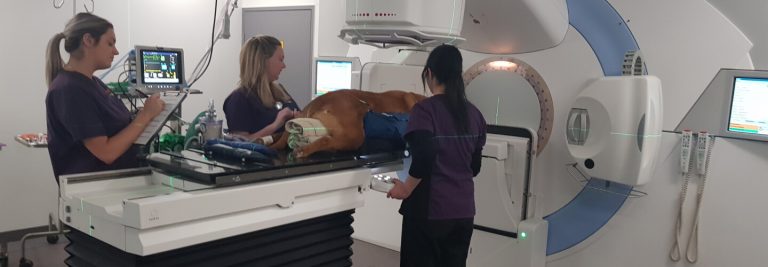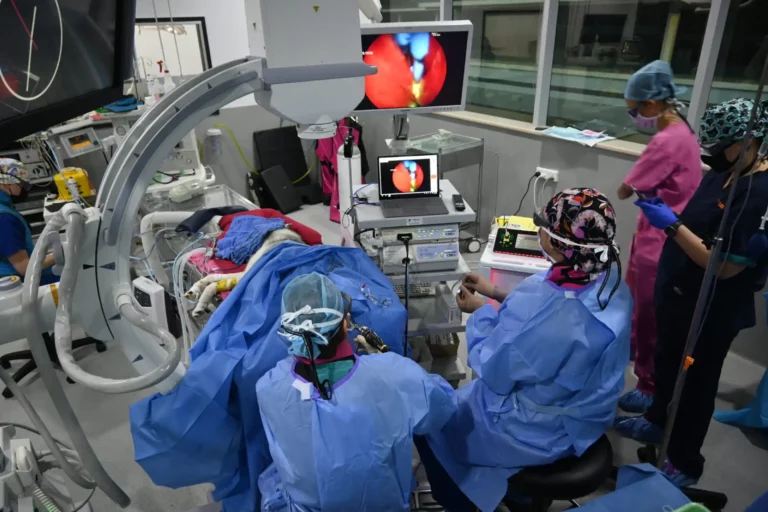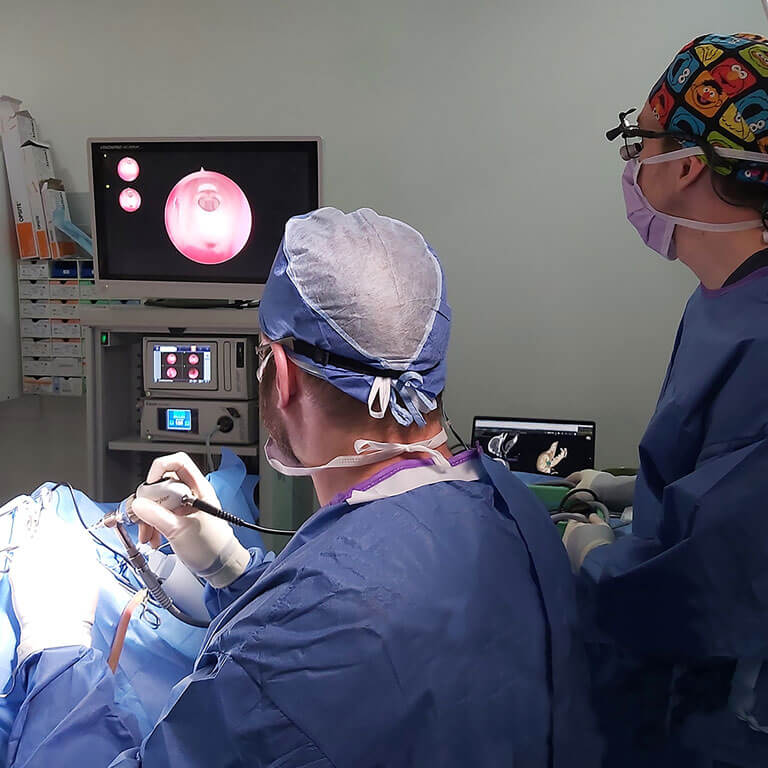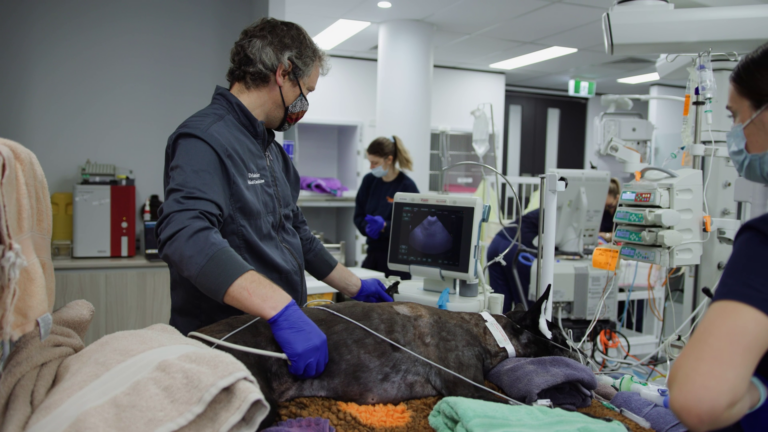By Dr Soo Kuan
Lung cancer in dogs and cats
Lung cancer in dogs or cats can be divided into 2 general categories – single solitary masses versus multiple metastatic nodules.
Single solitary lung masses usually originate from the lung tissue. However, this is not always the case. Multiple metastatic nodules (numerous small nodules throughout the lungs), is usually a cancer spread from elsewhere in the body (metastasis).
A CT scan is usually recommended over X-ray, to identify if there is one mass or many nodules, and where they are in the lungs or other parts of the body. Sometimes, X-ray alone, will miss smaller multiple masses. At SASH, we often recommend a CT scan to check the lungs prior to any cancer surgery, which allows us to detect any cancer spread to the lungs. Where we suspect a cancer originating in the lungs, we often recommend a CT scan to determine exactly where in the lung it is and whether there is more than one mass.
To help confirm the diagnosis, an ultrasound-guided fine needle aspirate may be performed by our Radiologists – this allows us to collect some cells from the mass to tell us which cell type the cancer arises from.
Surgery for dogs and cats with lung cancer
Surgery is the best solution for single solitary lung cancers, but not for multiple small nodules. We may also perform surgery for pets with 2 separate lung cancers, but the occurrence of this is rare. Sometimes chemotherapy is recommended after surgery. This will depend on tumour type and whether it has spread to local lymph nodes (which are biopsied at the time of surgery) is detected. Our Medical Oncology team will provide all necessary information regarding chemotherapy.
What is lung cancer surgery?
Depending on which lung lobe the mass is in, we would enter the chest either from the side (between the ribs) or from the underside of the chest (through the chest bone). Prior to surgery, blood tests, including blood typing, will be performed, in case a blood transfusion (from our in-house Blood Bank) is required during or after surgery.
Anaesthesia is complicated in these patients. At SASH we have specialist Anaesthetists (anaesthesiologists) to manage these types of anaesthetics and critical care specialists to manage them in the postoperative period
A chest drain will be placed at the end of surgery to allow us to remove any fluid accumulation from the chest and to ensure there is no air leaking from the lungs. Generally, drains are only in place for a short while (12-48 hours). Though in some cases, the drain needs to be in place for several days.
Potential lung cancer surgery risks
As with any surgery, there will be risk of infection and wound healing complications. Particular to lung surgery, there is a risk of air leakage from the lung into the chest, which may require prolonged drainage or a second surgery. Specific risks and complications will be discussed with you by your surgeon at the time of consultation.
Pet recovery after lung surgery
Your pet will recover from their surgery in the intensive care unit (ICU) under the supervision of our Critical Care specialists. Your pet will stay in the ICU until the drain is removed. Some patients may also need oxygen supplementation (via a nasal catheter), to allow the lungs to recover. Your pet will have some blood tests performed in hospital, to check their blood count and oxygen levels.
Once your pet is breathing well without oxygen supplementation and are comfortable with oral pain killers, they will be ready to go home.
Home care after lung surgery
At home, your pet will need to be kept quiet and confined. Dogs should be kept in a small room, pen or crate, for at least 2 weeks. They can be taken outside to toilet for 3-5 minutes, every 4-8 hours. Cats should be confined a crate or cage, approximately 1x1x1 m in size.
We also recommend that you check your pet’s breathing at least twice daily, to measure the number of breaths taken per minute while at rest, and also their breathing effort. If their respiratory rate is more than 28 breaths per minute at rest, or if your pet seems to require more effort to breathe, please bring them back to SASH immediately. SASH Emergency is open 24/7 and does not require an appointment.
We will always ask you to schedule a revisit for your pet approximately 10-14 days after surgery so we can check that they are progressing well and answer any questions you may have.




